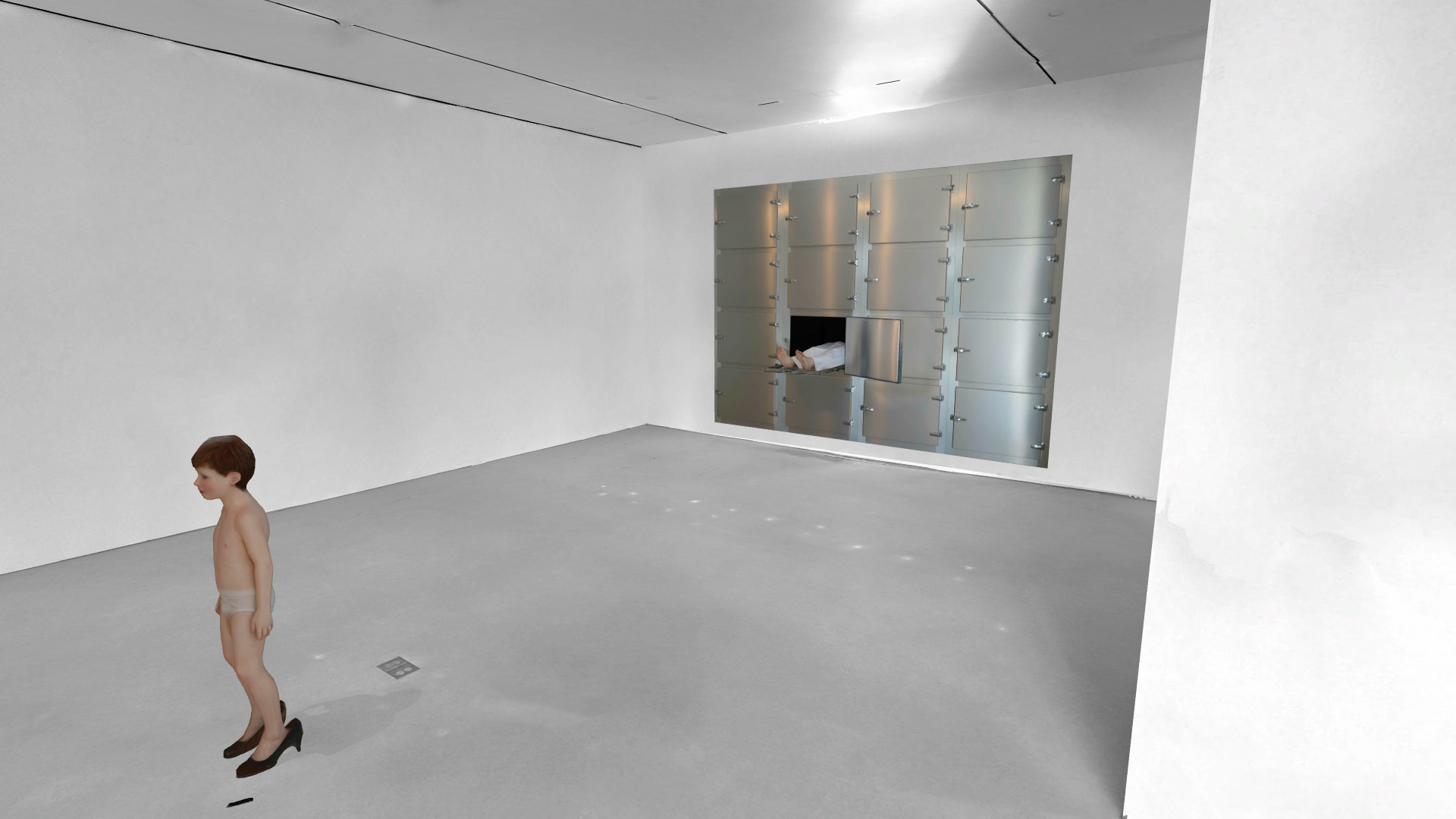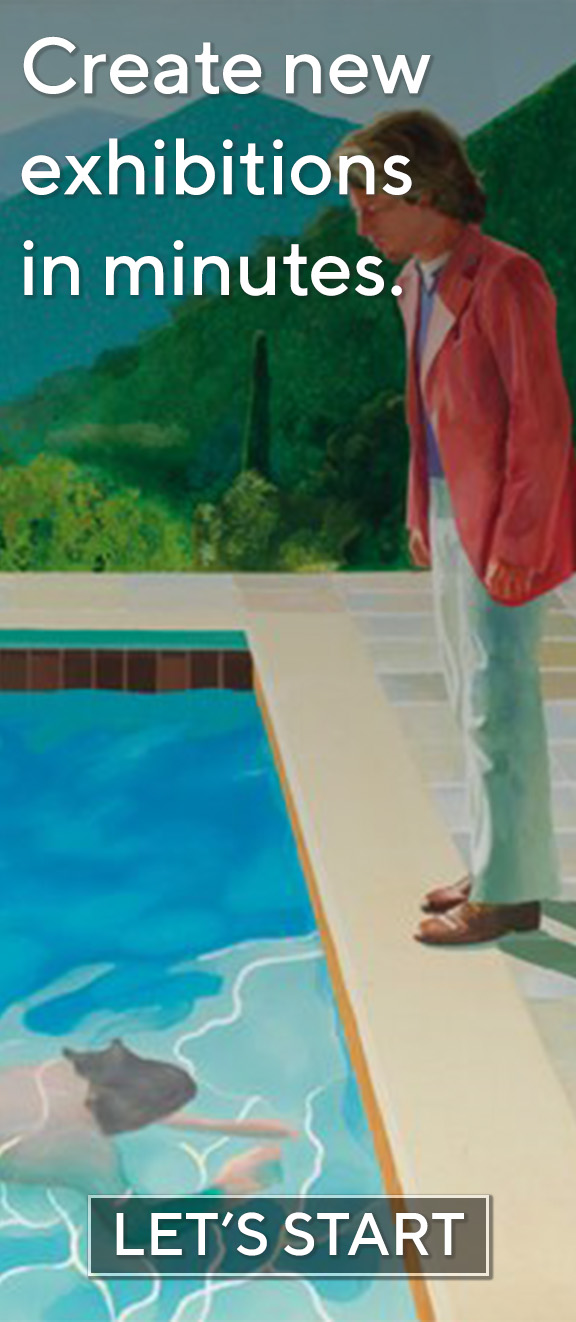

The exhibition will take place on FLAG’s 9th and 10th floor galleries, and includes a site-specific sculpture on its outdoor terrace overlooking the Hudson River. Changing Subjects, designed by the artists, presents new and existing works from the duo’s... more >> The FLAG Art Foundation is pleased to present Changing Subjects, a solo exhibition by internationally acclaimed artists Elmgreen & Dragset, on view October 1 – December 17, 2016.
The exhibition will take place on FLAG’s 9th and 10th floor galleries, and includes a site-specific sculpture on its outdoor terrace overlooking the Hudson River. Changing Subjects, designed by the artists, presents new and existing works from the duo’s twenty-year-long collaboration that address existential issues linked to identity, sexuality, and mortality, as well as an examination of social value systems and the expectations that surround them.
Changing Subjects investigates the multiple meanings of the word “subject” as a noun. In grammatical terms, the subject can be a noun functioning as one of the main components of a clause, making it the element about which the rest of the clause is predicated. In turn, the predicate is the part of a sentence or clause that expresses what is said of the subject on its own. In the context of this exhibition, the subject of each work exists independently of the others, yet when viewed together, they shift positions, creating a complex interconnection between the autonomous works.
The works in the exhibition, ranging in date of creation from 1998 to 2016, collectively guide visitors on a non-linear journey through various life stages. However, the sculptures and installations do not mark momentous occasions; on the contrary, they show introspective, unspectacular moments, by way of a figurative representation, by the use of a minimalist symbolic language, or by employing the actual materials to which they refer. Even when a lifelike human form is not shown, presence is implied through absence. The repeated use of an antiseptic material like stainless steel underscores a sense of a clinical study and evokes solitary feelings of abandonment.
Among the works in the exhibition on the 9th floor are Modern Moses, 2006, a wax figure depicting a sleeping baby in a carrycot at the food of an ATM machine; and The Experiment, 2011, a sculpture of a little boy in front of a mirror wearing his mother’s lipstick and high heels. A new work, Human Scale, 2016, shows an abstraction of human body parts via metal rulers mounted at varying heights on the wall, corresponding to the measurements of an adult’s head, hands, shoulders, waist, etc. An early readymade by the artist duo, Powerless Structures, Fig. 19, 1998, consists of two pairs of Calvin Klein underwear inside faded Levi’s jeans lying on the floor as if someone has just undressed and dropped them. The exhibition transitions on the 10th floor, where viewers first encounter 1 hr. 33 mins/2 hrs. 22 mins, 2016 – two candles in different states of melting, here carved in marble, are imbued with an uncharacteristic permanence. Side Effects, 2015, is a full floor installation of hand-blown glass vases filled with the actual pastel-colored pigments used to coat the latest generation of HIV medicines. The title refers to the physiological effects of the life-saving medication, as well as the resulting decrease in media attention that has followed these medical advances.
The outdoor terrace features Watching, 2016, a new life-size sculpture of a man on a lifeguard stand, likely more voyeur than rescuer, looking out over the Hudson River with binoculars. Made out of stainless steel, the polished surface mirrors and distorts the surroundings, and shifts the perspective on who and what is being watched.
About:
Michael Elmgreen (b. 1961, Copenhagen, Denmark) and Ingar Dragset (b. 1969, Trondheim, Norway) are an artist duo living and working in Berlin, Germany. Elmgreen & Dragset have been collaborating since the mid-1990’s, and their diverse artistic practice includes sculpture, large-scale installation, and performance. Recent solo exhibitions include Powerless Structures, Tel Aviv Museum of Art, Israel (2016); The Well Fair, Ullens Centre for Contemporary Art, Beijing, China (2016); Past Tomorrow, Galerie Perrotin, New York, NY (2015); among others. The artists’ work has been featured in recent major group exhibitions, including Paulin, Paulin, Paulin, Galerie Perrotin Paris, Paris, France (2015); What We Call Love, IMMA, Dublin, Ireland (2015); Little Is Left To Tell (Calvino after Calvino), Blueproject Foundation, Barcelona, Spain (2015); Poor Art – Rich Legacy. Arte Povera and parallel practices 1968 – 2015, Museum of Contemporary Art, Oslo, Norway (2015 – 2016); among others. Major public works include Van Gogh’s Ear, commissioned by Public Art Fund, Rockefeller Center, New York, NY (2016); A Greater Perspective, commissioned by the High Line, New York, NY (2015); Powerless Structures, Fig. 101, selected for the Fourth Plinth Commission, Trafalgar Square, London, United Kingdom (2012); Prada Marfa, commissioned by Art Production Fund/Ballroom Marfa, Marfa, TX (2005); among others. In 2009, Elmgreen & Dragset represented the Danish and Nordic pavilions at the 53rd edition of La Biennale di Venezia, Venice, Italy. Elmgreen & Dragset have been appointed the curators of fifteenth edition of the Istanbul Biennial, from September 16 – November 12, 2017.










